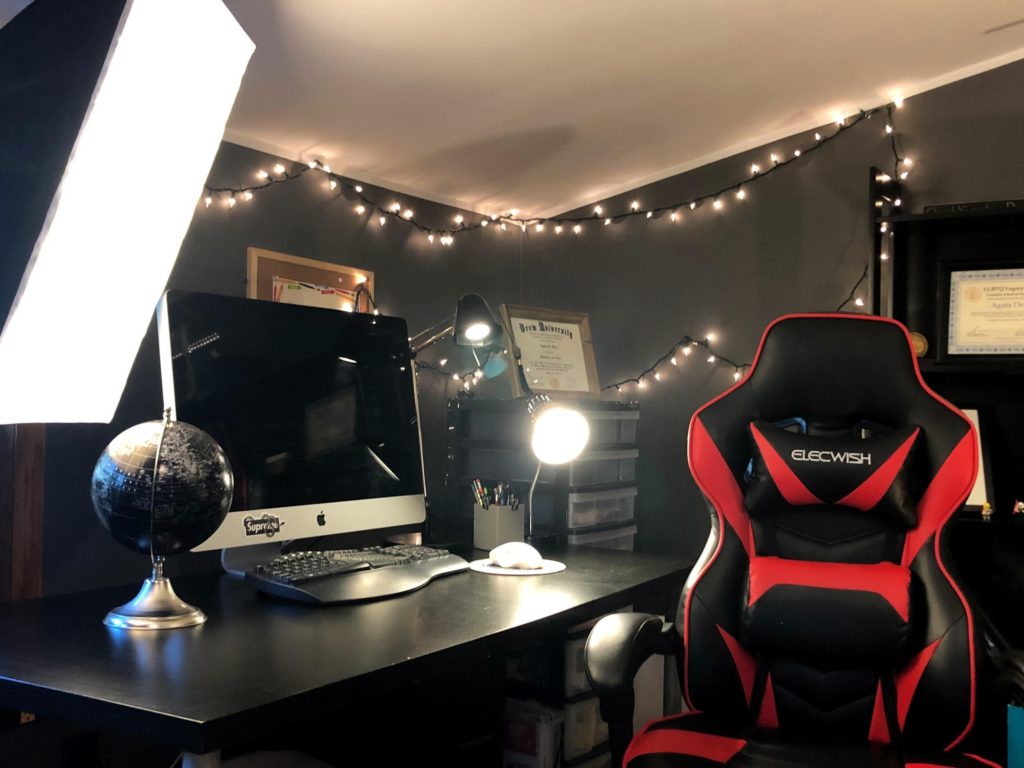Social Work in the Times of COVID-19: One way to share, document & support
The COVID-19 public emergency is unprecedented and affects our personal and professional lives. From trying to find diapers and toilet paper to figuring out how to work remotely with students and colleagues, few of us were prepared for the speed of which this emergency changed our daily lives. And we have yet to know and understand what things will look like in the next few weeks or months.

Thus, we are trying to capture this moment in history by harnessing the power of technology for social good. Through short videos posted on Flipgrid (a social learning platform designed for video discussion forums), we are hoping to create community while also collecting our stories as social workers (practitioners and educators). We hope these stories can help us support and learn from each other during a time of social distancing as well as provide a source of information for future directions for the profession (i.e. what are the best ways to work remotely as a social worker or what are best practices for transitioning learning to online environments). We anticipate that these videos will provide a wealth of information for blogs posts or other scholarship that will inform how social work needs to adapt to complex social problems. This might include qualitative thematic analysis or quotes from posts. Any peer-reviewed content will be anonymized, but please remember that these posts are a form of public social media.
The Power of Lighting in a Virtual Classroom: Tips on Improving Webcam Lighting for Online Educators
Editor’s Note: Agata Dera, MSW, is an Associate and Live Support Specialist with the Columbia School of Social Work’s (CSSW) Online Campus, where she works with social work faculty and students in online courses to optimize the digital learning environment. In this post, she provides insight on how online educators can put their best foot forward during live sessions through lighting. I first met Agata when I participated in CSSW’s Institute on Pedagogy and Technology for Online Courses last summer. You can read more about my experiences with the Institute in this post. In full disclosure, Agata did review and assess my ability to use lighting in a virtual classroom. All I can say is that I passed.
My primary responsibility is to provide technical support to the Columbia School of Social Work’s (CSSW) online community. My goal is to ensure that technology is considered as a tool rather than a barrier in online education. Also, as an alumni of this program, I am so proud to be a part of a virtual campus that is so committed to the quality of online learning by utilizing technological advancements.
One of the ways in which we ensure that our program is at the highest quality is by educating our community about the importance of great lighting when presenting on a webcam. Good lighting is one of the core elements of a successful on-camera performance for any online educator. It is part of our ongoing effort to create engaging, enlightening and innovative online courses in the most effective way possible.

Using Twitter at a Professional Conference
Editor’s Note: This post is one in a series about how technology can be used to develop and sustain one’s professional network. The idea for this post came from a think tank hosted by the University at Buffalo’s School of Social Work in June 2019, looking for a way to teach students in their new online Doctorate of Social Program (DSW) program about how to develop key stakeholder networks in relation to a substantive topic area. In this series, we are exploring the concept of a Professional Collaboration Network (PCN), which are technology-mediated user-centered relationship constellations designed to enhance or enrich connections, knowledge, and professional opportunities. This post covers the use of Twitter at professional conferences as a way to share your insights and extend the reach of the conference sessions.
This is the fourth blog post in a series on using Twitter to create Professional Collaboration Networks (PNCs). Previous posts included:
- What is a Professional Collaboration Network (PCN) & why do you need one?
- Twitter for your Professional Collaboration Network (PCN)
- How do you do relational Twitter?: Developing your Professional Collaboration Network

In this blog post, we discuss how Twitter can be used at a professional social work conference. There are at least two important reasons why tweeting at conferences is a valuable practice. First, attending conferences requires resources and time. Not everyone has the ability to attend all conferences, and one person certainly cannot attend all of the conferences that interest them. By tweeting from a conference, participants can share what they learned in sessions with anyone who is interested. Not only does this extend the reach of the knowledge shared at a conference, it makes content accessible to individuals and groups who might not be able to attend. Curating all the tweets from a conference can create an informal transcript of the happenings at a conference from multiple points of view. Second, tweeting at a conference allows an individual another way to network and meet people. Creating a public list of individuals and groups on Twitter who are attending the conference can supplement a stack of business cards and allow you to engage with more people during and after the conference. Alternatively, if you can’t attend a conference, you can follow the tweets of users who are at the conference and reply with your questions. There are even some conferences that occur only on Twitter (check out @Biotweeps).Third, it can increase your visibility in a particular subject area. For example, if you are presenting at the conference, you have the opportunity to share a photo and information from your session. The suggestions in this post come from the real life experiences of the authors as well as recommendations gleaned from articles written about conference tweeting.
How do you do relational Twitter?: Developing your Professional Collaboration Network
Editor’s Note: This post is one in a series about how technology can be used to develop and sustain one’s professional network. The idea for this post came from a think tank hosted by the University at Buffalo’s School of Social Work in June 2019, looking for a way to teach students in their new online Doctorate of Social Program (DSW) program about how to develop key stakeholder networks in relation to a substantive topic area. In this series, we are exploring the concept of a Professional Collaboration Network (PCN), which are technology-mediated user-centered relationship constellations designed to enhance or enrich connections, knowledge, and professional opportunities. This post covers how you can develop and nurture professional relationships with Twitter.
This is the third blog post in a series on using Twitter to create Professional Collaboration Networks (PNCs). Previous posts defined PCNs and discussed the value of Twitter as a network and how it can benefit lifelong learning, and shared some best practices. There are many professional reasons for being on Twitter, including disseminating one’s own work, announcing happenings, seeking help, and learning from others. To be successful in most of these tasks, you need to be plugged into a social network of people who are motivated to share your work. This post addresses how one moves from using Twitter to follow others and announce your work to developing real relationships with the real people at the keyboards.

This post is built from real-life experience of the amazing professional experiences and friendships that can come from the effective use of PCNs. About six years ago, I (Melanie, the first author of this post) connected with a small group of social workers who were using Twitter, which led me to connect with folks like Jonathan Singer (@socworkpodcast) who I went on to present and write book chapters with, and Laurel Hitchcock and Nancy Smyth, with whom I spent three years writing the book Teaching Social Work with Digital Technology. Beyond these meaningful work products, social work relationships on Twitter have evolved into sharing meals, spending time in each other’s homes, and splitting Airbnb’s at social work conferences across the nation. Not to mention people I can lean on, and am happy to support on good and hard days.


